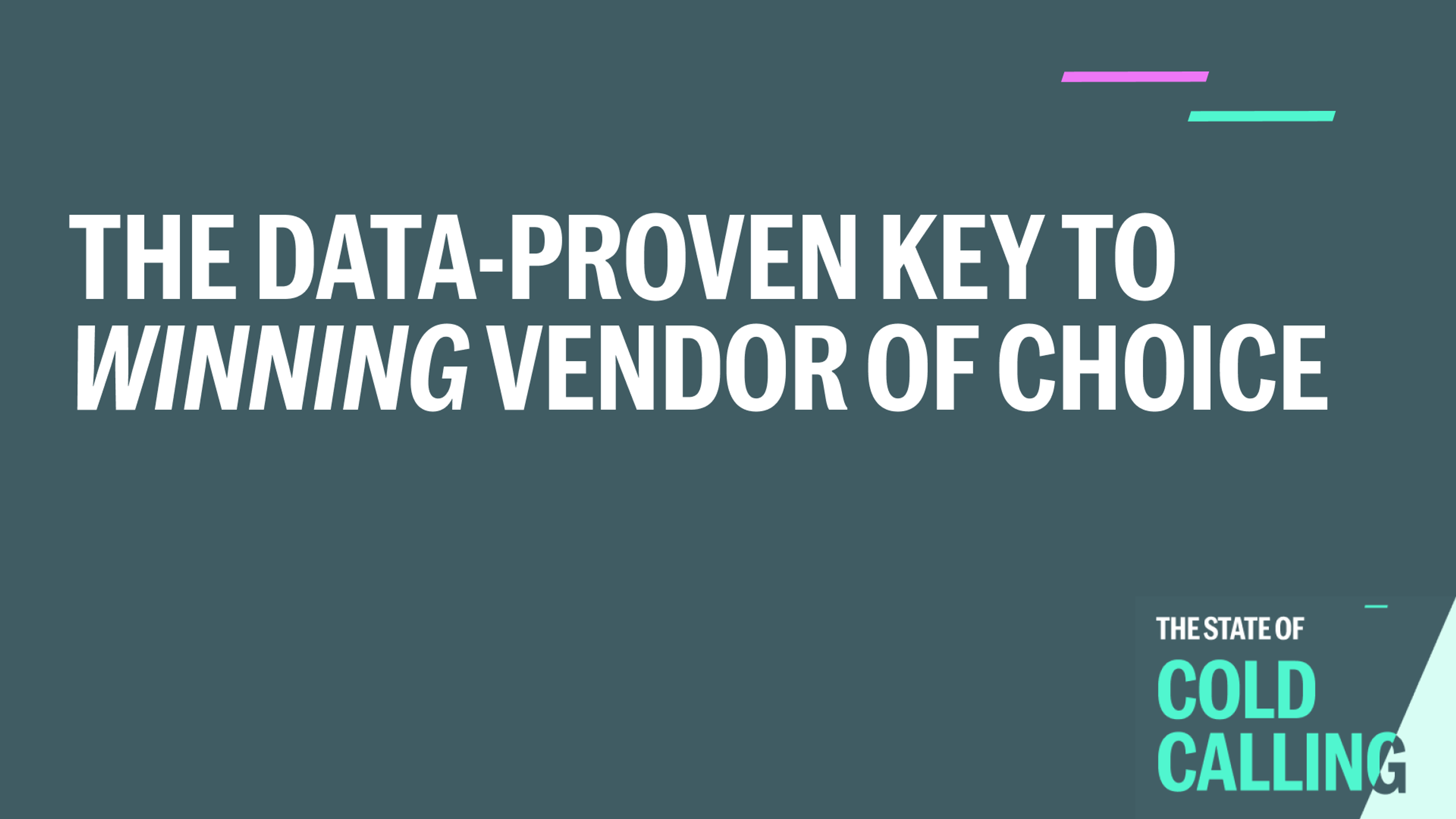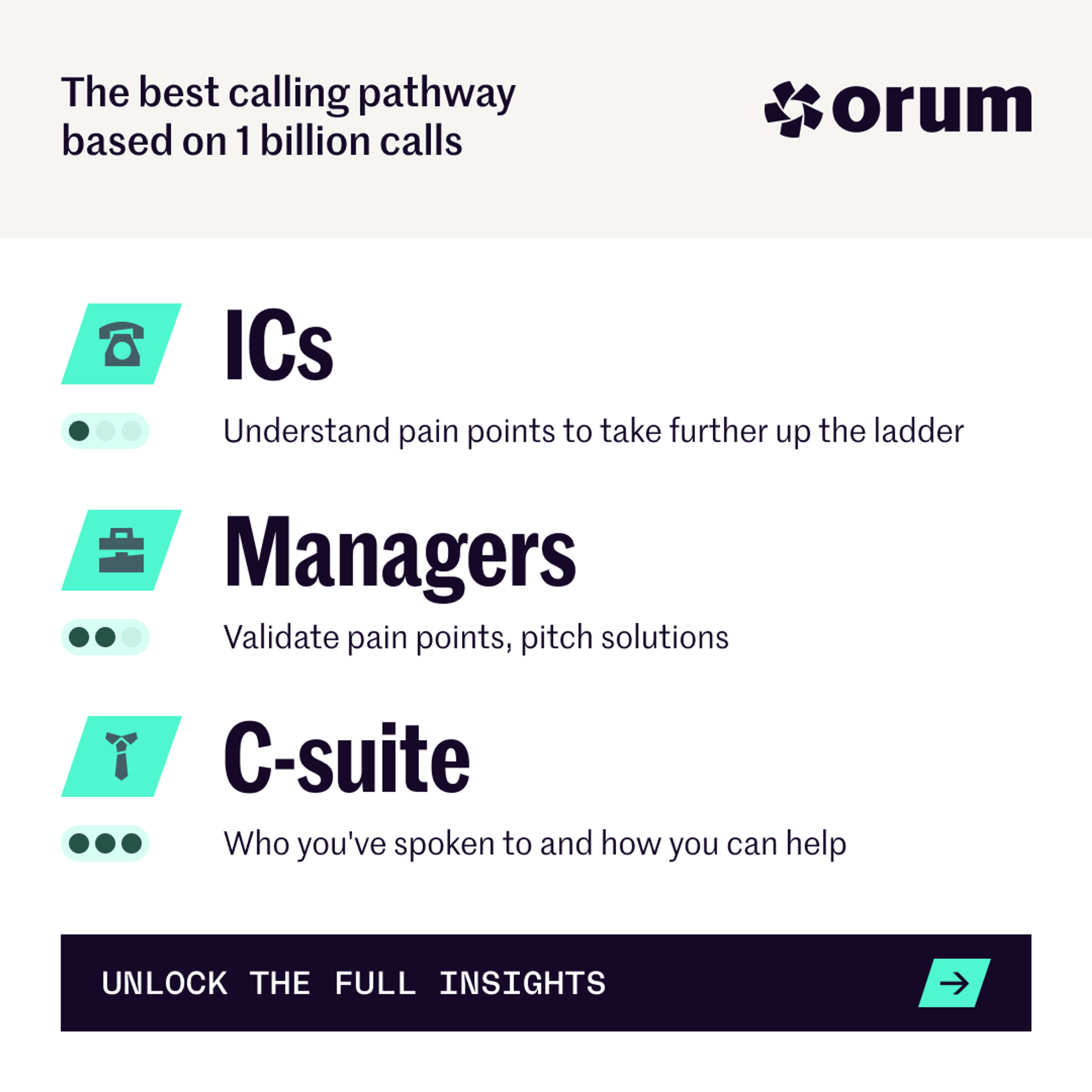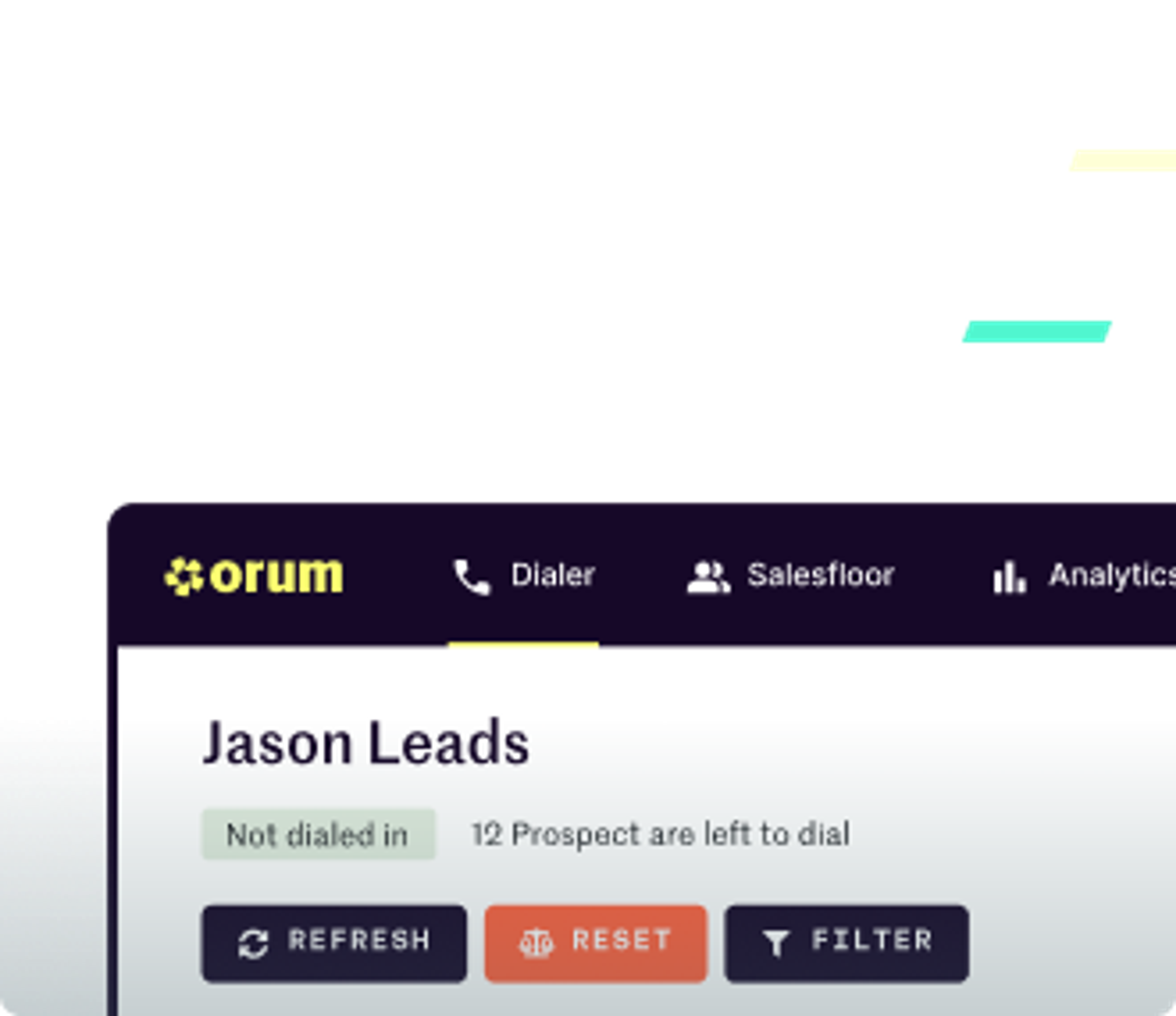The Middle Matters: Why Managers Are the Key to Winning Vendor of Choice


Every cold call has a purpose. Sometimes it’s to surface pain, sometimes it’s to confirm org structure, and sometimes it’s to advance a deal. But when you look across more than a billion calls from the State of Cold Calling report, one truth stands out: the middle of the org chart is where deals start to take shape.
Managers aren’t the final decision makers, but they’re the hinge between day-to-day execution and strategic priorities. When you reach them, you get the context that helps you position your solution with the right people later.

Where Managers Fit in Call Sequences
Calling Managers too early limits what you can do with the conversation. To make it productive, you should already know the basics.
Here’s how the sequence should look:
- Start with Admins or Coordinators. These roles help you confirm org structure and identify who’s involved in the process. They also signal timing and availability patterns.
- Talk to ICs. They surface firsthand challenges, give you tool names, and describe daily friction. That builds your understanding of what’s happening on the ground.
- Then call the Manager. At this point, you’ve mapped the account and can have a more strategic conversation. You’re validating the problems you’ve already heard and positioning your solution in the context of their team’s goals.
This is where you move from fact-finding to aligning. The insights you collect from the Manager call will frame your outreach to Directors and VPs later in the cycle.
What to discover during manager conversations
When you connect with a Manager, the goal isn’t to book a meeting immediately. It’s to learn enough to position your solution as the obvious choice higher up the chain.
Focus on five key areas:
- Operational pain. Where is their team losing time, money, or momentum?
- Tool stack. What are they currently using, and how satisfied are they with it?
- Process gaps. What slows down their team, and what has leadership already tried to fix it?
- Decision influence. Who owns the evaluation, who gives feedback, and who signs off?
- Strategic alignment. How does this problem connect to their department’s bigger goals?
A Manager conversation should end with a clear picture of the internal landscape—what’s broken, who cares, and how decisions actually move. That’s what enables the next call in the sequence to land with relevance.
The Goal: Alignment, Not Access
Too often, outbound sequences treat every call as a pitch. But calling Managers is about earning the right to reach the people who matter most later.
When you use data to time the call, come in with insight from previous conversations, and focus on learning—not selling—you turn a Manager connect into a strategic advantage.
They’re not the finish line. They’re the step that gets you there faster.





